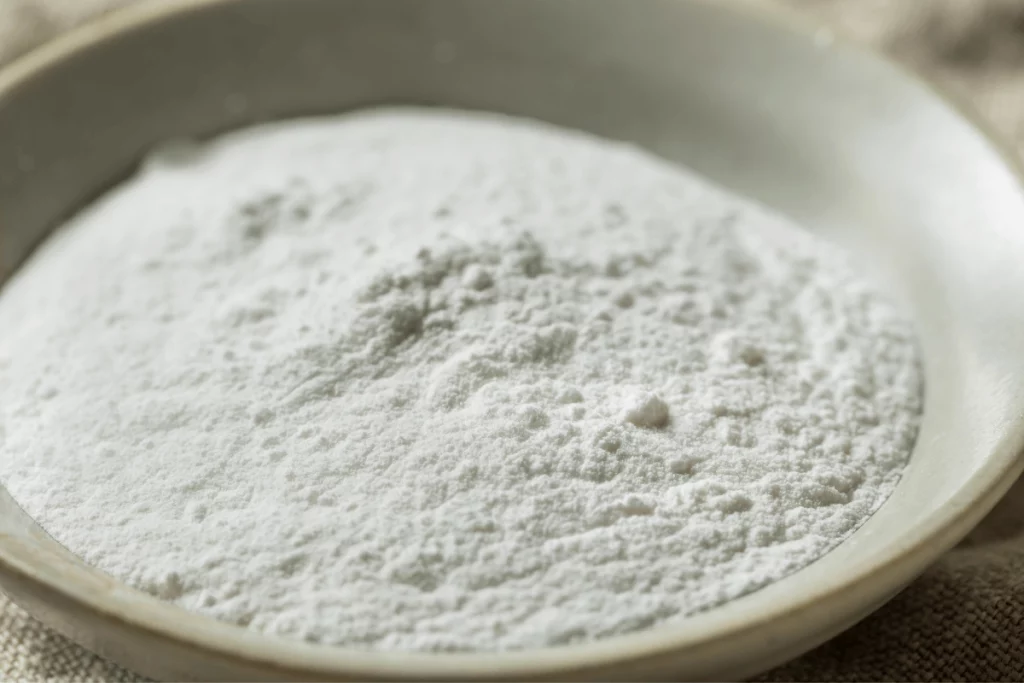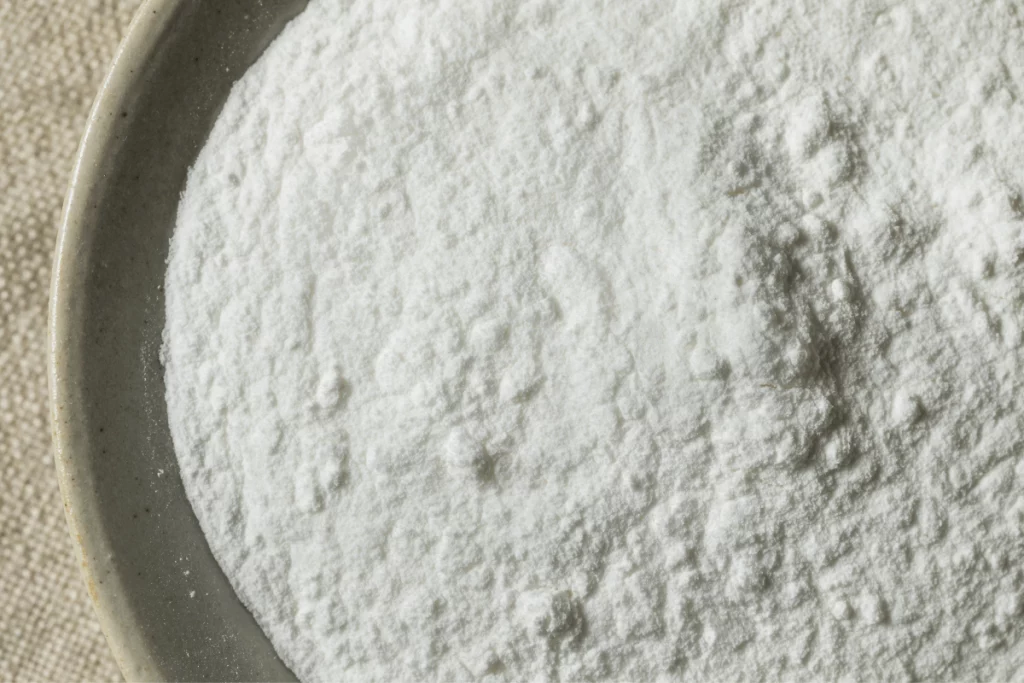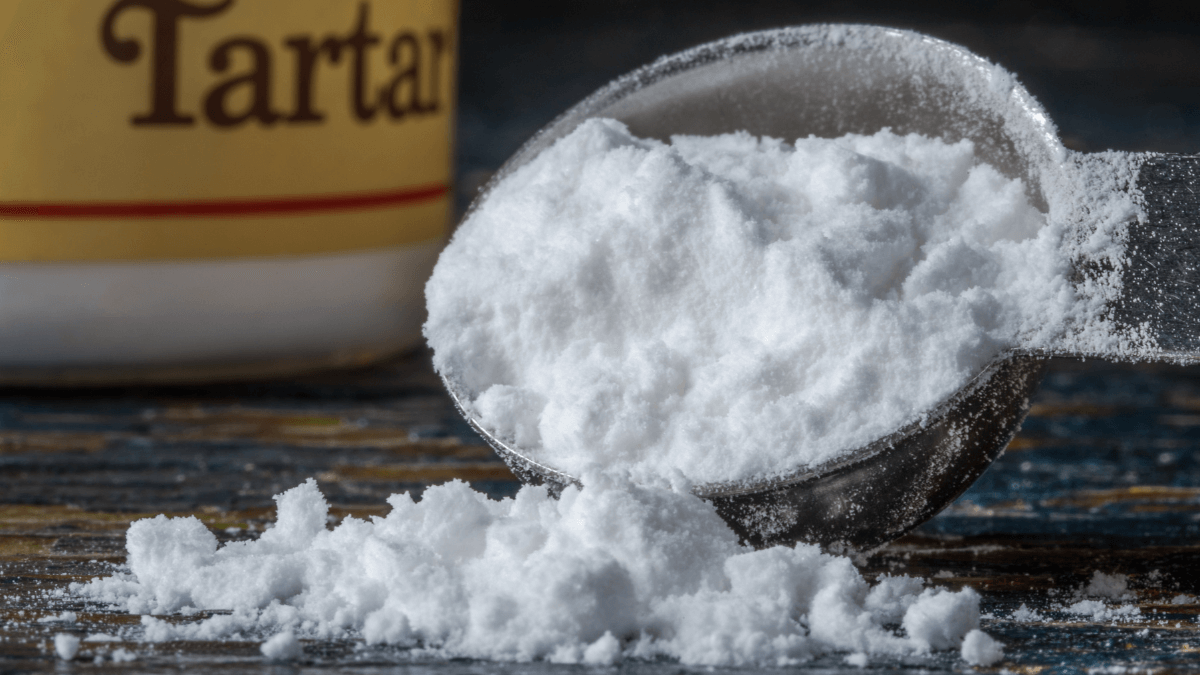Introduction to Cream of Tartar
Have you ever wondered what cream of tartar does in cookies? This white powder, often found in the baking aisle, is a key ingredient in many cookie recipes. It’s not just there for show; it has some special powers in baking. Let’s find out what cream of tartar really does and why bakers love using it in cookies.
Understanding Cream of Tartar
Cream of tartar might sound fancy, but it’s actually a simple thing you can find in many kitchens. It’s not creamy at all. Instead, it’s a white powder that comes from making wine. Even though its name is a bit confusing, it’s really useful, especially when you’re baking.
Historical Background and Usage
A long time ago, people making wine found this powder in their barrels. They figured out that it could be really handy in cooking and baking. In baking, cream of tartar does some pretty cool stuff. It’s like a secret helper that changes how cookies and cakes turn out. It can make them softer, taste better, and even look nicer.
The Role of Cream of Tartar in Baking
When we bake, cream of tartar does some pretty neat things. It’s like a little baking wizard. First off, it’s made of stuff that can react with other ingredients, which is super helpful. This reaction can make cakes and cookies rise and become fluffy.
Chemical Composition and Properties
Let’s get a bit science-y, but in a fun way! Cream of tartar is a bit acidic. This means it can mix well with baking soda (which is basic) to create air bubbles. These bubbles help make your cakes light and airy. It’s like blowing up tiny balloons inside your cake!
Cream of Tartar in Meringues and Angel Food Cakes
Now, for something really cool: meringues and angel food cakes. These treats need to be super light and fluffy. Cream of tartar helps here by making egg whites stronger. This means they can trap more air and stay puffed up, just like a cloud!
Impact on Texture and Flavor in Cookies
In cookies, cream of tartar does two big things. First, it stops sugar crystals from forming, so your cookies stay soft and chewy. Second, it adds a tiny tangy taste, which makes cookies like snickerdoodles really special. It’s a small touch, but it makes a big difference!

Cream of Tartar in Cookie Recipes
Cream of tartar isn’t just a general baking ingredient; it’s a star in certain cookie recipes. Let’s look at how it makes some cookies so special.
Case Study: Snickerdoodle Cookies
Take snickerdoodles, for example. These aren’t your ordinary cinnamon cookies. Cream of tartar gives them a unique chewy texture and a slight tangy taste. It’s what makes a snickerdoodle a snickerdoodle! Without cream of tartar, they’d just be plain cinnamon cookies.
Other Cookie Varieties Using Cream of Tartar
But it’s not just snickerdoodles. Other cookies also benefit from cream of tartar. It helps sugar cookies stay soft and prevents them from getting too crispy. In recipes where you want a light, tender texture, a pinch of cream of tartar can make all the difference.
Why not try it out with a delightful Cookie recipe? Check out our Raspberry Thumbprint Cookies Recipe
The Science Behind Cream of Tartar in Cookies
Understanding the science of cream of tartar in baking is like unlocking a secret recipe for perfect cookies. Let’s break it down into simple terms.
Chemical Reactions in Baking
When you mix cream of tartar with baking soda in a cookie recipe, it creates a chemical reaction. This reaction produces carbon dioxide gas. Think of it like a tiny bubble machine inside your dough. These bubbles help your cookies rise and become light and fluffy.
Interaction with Other Ingredients
Cream of tartar also plays well with other ingredients. For example, it helps stabilize egg whites, making them strong enough to hold air. This is super important in recipes like meringues or angel food cakes, where you need lots of air to make them light and airy.
In cookies, cream of tartar stops sugar from forming big crystals. This means your cookies won’t turn hard and crunchy but will stay soft and chewy. It’s a small change in the recipe, but it makes a big difference in how your cookies feel and taste.
Substituting Cream of Tartar in Recipes
Sometimes, you might find yourself ready to bake but realize you’re out of cream of tartar. No need to panic! There are some neat substitutes you can use.
Common Substitutes and Their Effects
One popular substitute is lemon juice or white vinegar. These are acidic, just like cream of tartar, so they can do a similar job in your recipe. If you’re making cookies, using lemon juice or vinegar can help keep them soft and chewy. But remember, they might add a slight tangy flavor, which can be a fun twist!
How Substitutes Alter Cookie Characteristics
Using substitutes can change your cookies a bit. They might not rise quite the same way as with cream of tartar, but they’ll still be delicious. It’s all about experimenting and seeing what works for you. Baking is like a fun science experiment in your kitchen!
Beyond Cookies: Cream of Tartar in Cooking
Cream of tartar isn’t just for cookies; it’s a versatile player in the kitchen. Let’s explore some other ways this handy ingredient can be used in cooking.
Role in Other Desserts and Dishes
Apart from cookies, cream of tartar is great in desserts like meringues and soufflés. It helps them rise and stay puffy. But that’s not all. You can also use it to keep fruits and vegetables bright and colorful when you boil them. A little pinch can make a big difference!
Non-baking Uses in the Kitchen
Did you know cream of tartar can also help with whipped cream? It stabilizes it, so your whipped cream stays fluffy longer. Plus, if you’re into making homemade play dough, cream of tartar is a key ingredient. It makes the dough smooth and keeps it from going bad.
Storing and Preserving Cream of Tartar
Keeping your cream of tartar fresh and ready to use is easier than you might think. Let’s go over some simple tips to store it properly.
Best Practices for Storage
The key to storing cream of tartar is keeping it in a cool, dry place. You don’t want it to get moist or hot. A kitchen cupboard away from the stove or any heat source is perfect. Also, make sure it’s in a tightly sealed container. This stops any moisture or other kitchen smells from getting in.
Shelf Life and Potency Over Time
One of the best things about cream of tartar is that it lasts a really long time. It doesn’t really go bad. But, over time, it might lose some of its potency. If you’ve had yours for a while, just check it before you use it. It should still look white and powdery and smell a bit acidic. If it does, you’re good to go!

Practical Baking Tips and Tricks
Maximizing the Benefits of Cream of Tartar in Home Baking
Using cream of tartar in your baking can be a game-changer. Here are some practical tips and tricks to help you get the best results in your cookie baking adventures.
Do’s and Don’ts When Using Cream of Tartar
- Do measure accurately: Cream of tartar is powerful, so a little goes a long way. Use the exact amount your recipe calls for to avoid altering the taste or texture of your cookies.
- Don’t substitute blindly: If you’re out of cream of tartar, remember that substitutes like lemon juice or vinegar can change the flavor of your cookies. Use them wisely.
- Do store it properly: Keep your cream of tartar in a cool, dry place to maintain its effectiveness.
Troubleshooting Common Baking Issues
- Flat cookies: If your cookies are turning out too flat, check if your cream of tartar is still active. It might be time to get a fresh container.
- Too crispy or too chewy: Adjust the amount of cream of tartar slightly. A bit more can make cookies chewier, while a bit less can make them crisper.
- Weird flavors: Cream of tartar should be tasteless in the right amount. If your cookies have an off taste, reduce the cream of tartar slightly in your next batch.
What Does Cream of Tartar Do in Cookies?
Cream of tartar might seem like just a small part of cookie recipes, but it does some really important things. Let’s find out how it helps make cookies so yummy.
In-depth Analysis of Its Role
In simple words, cream of tartar makes sure your cookies don’t get too hard. It stops sugar from forming big crystals, so your cookies stay soft and chewy. Also, when it mixes with baking soda, it makes tiny bubbles. These bubbles help your cookies puff up and become light. So, every little bit of cream of tartar is working to make your cookies just right.
Expert Opinions and Studies
People who know a lot about baking and food science say that cream of tartar is really important for cookies. It helps them have the perfect softness and taste. It’s especially important in cookies like snickerdoodles, where it gives that special soft texture and yummy flavor.
So, what does cream of tartar do in cookies? It helps them stay soft and chewy, makes them light and fluffy, and even makes them taste better. It’s a small ingredient with a big job in making cookies delicious!
Wrapping Up: The Importance of Cream of Tartar in Baking
Cream of tartar might just be a small part of your recipe, but it plays a big role. It’s like a secret ingredient that can change the whole game when it comes to baking cookies and other treats.
Summary of Key Points
- Cream of tartar helps cookies rise, stay chewy, and adds a unique flavor.
- It’s also great in other recipes, like meringues and whipped cream.
- You can store it easily, and it lasts a long time.
Final Thoughts and Recommendations
Next time you bake, think about using cream of tartar. Whether you’re making fluffy cakes, chewy cookies, or stable whipped cream, it’s a handy ingredient to have. And remember, baking is fun – so don’t be afraid to experiment and try new things!
That’s a wrap on our journey with cream of tartar. Happy baking, and enjoy the magic it brings to your kitchen!
FAQs About Cream of Tartar in Cookies
Yes, you can. Your cookies will still be tasty, but they might have a different texture or not rise quite the same way.
It can add a slight tanginess, especially in recipes like snickerdoodles. But in most cookies, you won’t taste it much.
While not absolutely necessary, it helps a lot. It makes the egg whites stronger and your meringues puffier and more stable.
While not always necessary, cream of tartar can make a big difference. It helps with the texture and rise of the cookies. For some recipes, like snickerdoodles, it’s essential for that classic taste and texture.
If you skip it, your cookies might not rise as well or be as chewy. They could end up being flatter and crisper than intended.
Cream of tartar helps stabilize egg whites, prevents sugar crystals from forming, and acts as a leavening agent when combined with baking soda. This leads to softer, fluffier, and more consistent baked goods.

